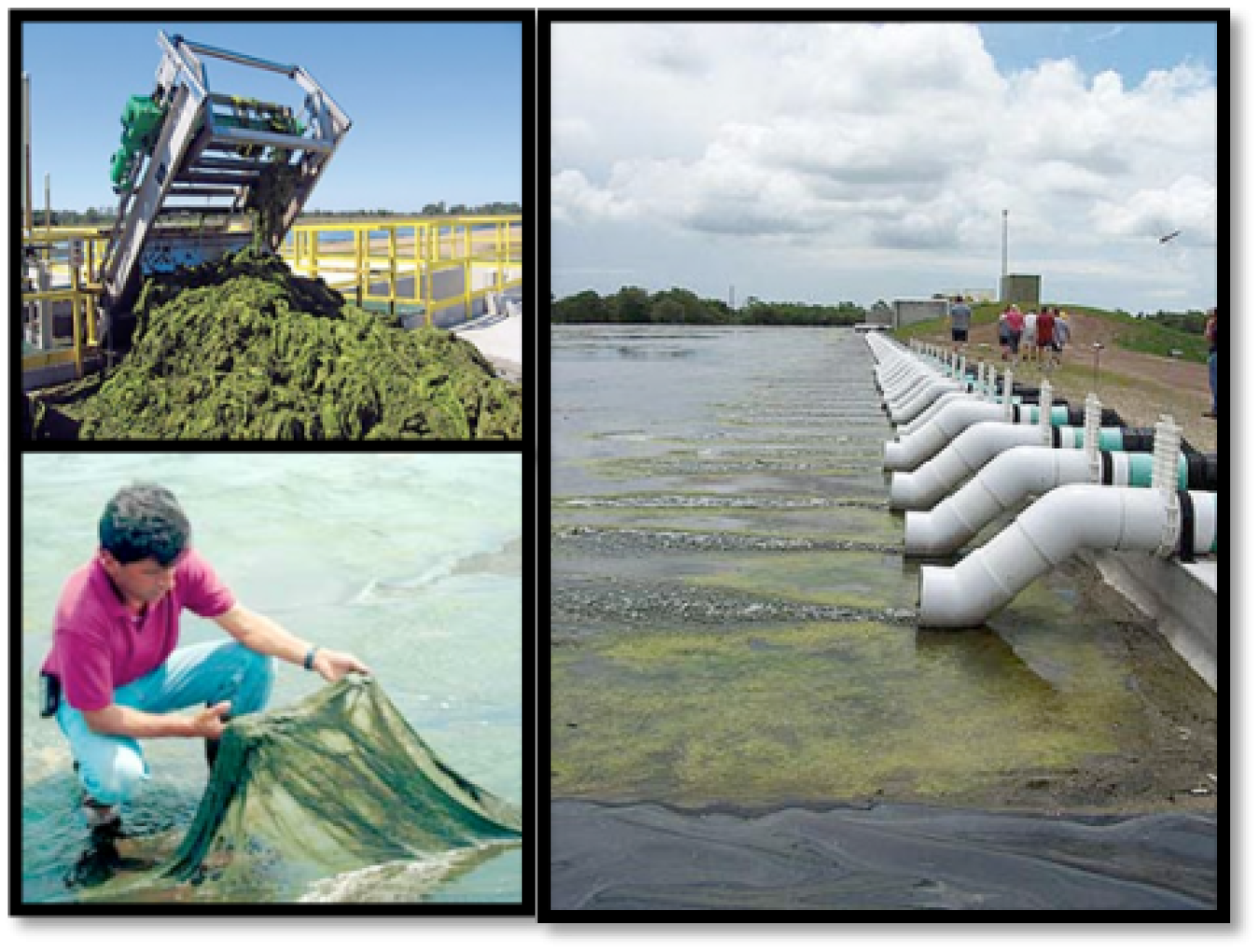Algae absorb nutrients and produce oxygen—ecosystem services that are vital to the health of impaired water bodies like the Chesapeake Bay and Gu...
January 5, 2017
Cleaning up nutrients from surface waters while growing biomass for biofuel production. Photos Courtesy | Sandia National Laboratories
Algae absorb nutrients and produce oxygen—ecosystem services that are vital to the health of impaired water bodies like the Chesapeake Bay and Gulf of Mexico. Energy Department-funded researchers are investigating how to mimic these natural services, while at the same time, sustainably produce biomass for conversion to renewable biofuels and bioproducts. It’s a double win for the environment!
Researchers have developed algal flow-ways, or “Algal Turf Scrubbers,” to manage nutrient loading and improve fresh water, estuarine, and marine communities. In these systems, filamentous algae (long, threadlike structures) are strategically installed near stormwater or wastewater runoff sites, and then harvested with mechanical farm equipment, similar to conventional agriculture practices.
The Chesapeake Bay Program recently recommended the use of algal flow-way technologies as a novel best management practice (BMP) for reducing nutrients (such as phosphorous and nitrogen) and sediments, and the Maryland Port Administration’s installation of an Algal Turf Scrubber was named Most Innovative in the “Best Urban BMP in the Bay Area” (or BUBBA) Awards by the Chesapeake Stormwater Network.
The Energy Department’s Bioenergy Technologies Office is funding Sandia National Laboratories, in partnership with the Smithsonian Institute and HydroMentia, to develop Algal Turf Scrubbers for the production of biofuels. The highly productive, easily harvested and dewatered turf algae is a promising source of reliable biomass for processing to bio-crude oil that can then be converted to renewable diesel, gasoline, or jet fuels. The Sandia team is working to maximize biomass fuel yield, while improving the logistics and economics of scaling the system to commercial production. Current challenges being tackled include characteristically low lipid content, as well as high nitrogen and ash content that impact downstream processing

